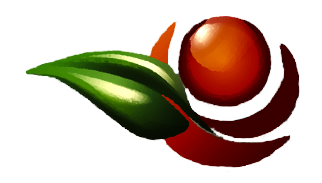Occultation in market gardening: Simple, effective and ultra-high-performance!
Intensive organic market gardening is a cultivation method that aims to maximize vegetable production on small surfaces while respecting the principles of organic agriculture. One of the key techniques in this approach is occultation, which involves covering the soil to improve fertility and control weeds. Among the materials used, silage tarpaulin stands out for its effectiveness.
What is cloaking?
Occultation consists of covering the soil with an opaque tarpaulin for several weeks to encourage the decomposition of organic matter and eliminate weeds through light deprivation. This technique takes advantage of the activity of soil micro-organisms, which thrive under the tarpaulin thanks to the accumulated moisture and heat.
Why use silage tarpaulins?
Polyethylene silage tarpaulins are widely used for screening, thanks to their suitable properties:
Opacity: They completely block out light, which is essential for blocking weed growth.
Durability: They are made from resistant materials that can last for several seasons (around ten years), making them economical.
Ease of use: Available in a range of sizes that can be cut to size, they can be adapted efficiently to the market-gardening system in place.
Moisture retention: They prevent water evaporation, creating favorable conditions for microbial life and earthworms.
How do I install a tarpaulin?
Soil preparation: Before laying the tarpaulin, prepare the soil by removing large debris and adding compost or other organic amendments if necessary.
Installing the tarpaulin: Lay it out over the surface to be treated, making sure it covers the edges to prevent light infiltration. Make sure it is taut to avoid air pockets.
Lester the tarpaulin: Use weights to hold the tarpaulin in place against the wind. You can, for example, install rolled gravel silos in each grommet. It's also important to staple garden edges every 1.50 meters, doubling the plastic to prevent tearing.
Blackout period: This depends on a number of factors, including soil type, climate and planned crops. In general, a period of at least 8 weeks is recommended in winter. Blackout is also useful in summer, for around 3 to 4 weeks.
Removing the tarpaulin: Once the blackout period is over, remove the tarpaulin and prepare the soil for planting. You should see a significant reduction in weeds and an improvement in soil structure.
The benefits of blackout
-
By depriving weeds of light, blackout prevents their germination and growth. This considerably reduces the need for manual or mechanical weeding.
-
Under the tarpaulin, organic matter decomposes more rapidly, enriching the soil with nutrients. Beneficial micro-organisms proliferate, improving soil structure and fertility.
-
Avoids mechanical tillage, reducing fatigue and energy consumption.
-
The tarpaulin helps maintain soil moisture by reducing evaporation, which is particularly useful in regions where water is a precious resource.
-
The tarpaulin can also help regulate soil temperature, creating a more stable environment for crops.
-
Naturally prepared soil promotes better vegetable growth and increased productivity.
The cost of this method
The calculations are based on a fully covered garden with 12 standardized planks, each measuring 20 meters in length, with permanent planks 75 cm wide, and 45 cm footbridges.
Costs include :
160 euros for a roll of tarpaulins.
Around 40 euros for silosacs and staples.
Thus, the total cost for a complete garden covering is 200 euros. Amortized over ten years, this represents 20 euros per year.
This modest investment pays for itself in long-term use, time savings, energy savings and increased vegetable productivity.
Precautions to take
Keep an eye on soil moisture.
Do not prolong blackout excessively.
Woven fabric is not suitable for blackout applications.
Conclusion
Silage cover is a valuable technique for bio-intensive market gardeners wishing to optimize weed management and improve soil quality without mechanical labor. Easy to implement and economical in the long term, it is a sustainable and effective alternative for preparing beds and promoting living soil.



